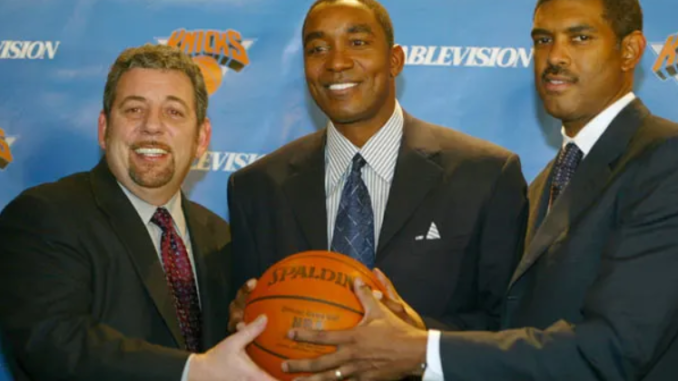
8. The Isiah Thomas Rebuild
Orchestrator:
Highlights:
- Isiah Thomas was given the impossible task — turn over a roster that Scott Layden had assembled that was old, unathletic, undertalented, overpaid, way over the cap for years into the future, and had only one player that anyone wanted.
- This was a 4-year period that featured:
- The Eddy Curry fiasco,
- The Stephon Marbury fiasco,
- The Jerome James fiasco,
- The Larry Brown fiasco,
- The Anucha Brown Sanders fiasco, and
- The “Fire Isiah” signs/chants at MSG fiasco.
- Yet Isiah left with a roster of Eddy Curry, Zach Randolph, David Lee, Jamaal Crawford, Stephon Marbury, Wilson Chandler, and Nate Robinson amongst others.
- James Dolan interfered with Isiah several times — forcing him to hire a coach he didn’t want — in Larry Brown — and when Larry Brown failed, Dolan forced Isiah to coach his own players; another mistake. Isiah was the last GM that Dolan would interfere with. Meanwhile, Isiah could never find the right coach (including himself) to coach his players (much like Phil Jackson, years later).
- Disclaimer: I am one of the 3% of hard core NY Knick fans who thinks Isiah did a good job as GM, given the circumstances. For the details, read on:
The First Year:
1. The Impossible Task — Isiah Inherited a Disaster
On December 22, 2003, owner James Dolan hired Isiah Thomas to be the GM of the Knicks. He had given Scott Dolan 4 years to rebuild the Knicks, but Layden had managed the Knicks into a horrific state. Isiah Thomas was told to do the impossible — turn over a horrible roster with only one player on it that had any value (Kurt Thomas) with a massive team payroll (at over $100 million, well over the cap of $52 million at the time, with contracts signed 4 years into the future). The Knicks had:
- Dikembe Mutumbo at center — age 37 and could barely move 2 inches laterally anymore.
- Besides Kurt Thomas, the most incredible array of undersized/undertalented power forwards in NBA history, led by Clarence Weatherspoon, Othella Harrington, Mike Sweetney, and franchise-player-of-the-future Maciej Lampe.
- Allan Houston at shooting guard, whose knees were shot and would never play another game.
- Charlie Ward at point, about to retire he would never play another game.
- Shannon Anderson and Howard Eisley as guards off the bench — both of them overpaid and undertalented.
All the NYC tabloid newspapers and media at the time said Isiah was given an impossible task. Isiah said he could do it, with sign-and-trades and the draft.
2. The Immediate Moves
Isiah jumped on the job, making immediate moves:
- A day after taking the job, Isiah waived Slavko Vraneš the 7’0 backup center.
- A week later, Isiah traded Clarence Weatherspoon to the Houston Rockets for John Amaechi and Moochie Norris.
- Isiah also took care of the Knicks one good player — Kurt Thomas — reworking his contract to give him a raise, which provided pay more reflective of Kurt Thomas‘s excellent play.
3. The Stephon Marbury trade
A week after the immediate moves, Isiah acquired his point guard to lead the rebuild — Stephon Marbury — getting him from Phoenix for Antonio McDyess and a bunch of players.
In the trade, along with Antonio McDyess, Isiah dumped Maciej Lampe (who Scott Layden said was possibly the franchise big man of the Knicks future, and a steal in the 2003 draft, having fallen to the 2nd round), along with overpaid Howard Eisley, Charlie Ward (who would never play another game), Milos Vujanic, a 2004 1st round draft pick (Kirk Snyder was later selected) and a 2010 1st round draft pick (Gordon Hayward was later selected) to the Phoenix Suns for Stephon Marbury, Anfernee Hardaway, and Cezary Trybański.
- Trade Review: This should have been a Great trade for Isiah — getting Marbury at age 26 for McDyess (age 29) and a load of NBA garbage. That first round pick which resulted in Gordon Haywood should never have been so high if the Knicks had started winning. But they didn’t. Marbury could score like a hot-knife-thru-butter and was a high IQ player who defended pretty well (took out Kobe Bryant on more than one occasion), and actually put up HOF numbers (Marbury’s career numbers are actually better than Walt Frazier‘s). But Isiah didn’t concern himself with Marbury’s personality, which at that point was not especially team oriented. Isiah, the optimist, thought he could change anybody.
- Later, in 2005-06 when Isiah Thomas became the Knicks coach, he tried to change Marbury into the point guard he had been — instructing Marbury to be a pass-first point guard with the delicate nuance of scoring when he was the best option to score. Marbury revolted from this advice, and immediately completely stopped taking shots — spent a whole game only passing the basketball. This was the beginning of a massive fallout between the two.
4. The Lenny Wilkens Fiasco
A week after acquiring Marbury, on January 15, 2004, Isiah fired Don Chaney as coach, and hired Lenny Wilkens. Wilkens, a former Hall of Fame point guard like Isiah, who had won a title as a coach with Seattle, disappointed.
Isiah hoped that Wilkens would coach the young, athletic, guard-oriented team he would be building. But the season before his hiring, Vince Carter had said that Wilkens was in retirement mode in Toronto. And it appeared that way on the Knicks as Wilkens reportedly did not instill the discipline in workouts, or lay down a team defense. He would last a year and 5 days, before being fired himself and replaced with Herb Williams for the remainder of the 2005 season.
However, what is often forgotten is that Wilkens was successful at first — the Knicks went 23-19 after he took over in 2004 to make the playoffs; although they were swept in 4 games by the Nets. The next year they were 17-22 when Wilkens was let go. Herb Williams took his place as interim coach, and the Knicks went 16-27 under him to end the 2005 season.
5. Dumping Keith Van Horn
Less than 2 months later, in February 2004, the Knicks traded Keith Van Horn to the Milwaukee Bucks; and received Nazr Mohammed from the Atlanta Hawks; and Tim Thomas from the Bucks (Milwaukee also traded Joel Przybilla to Atlanta). It was later reported that Marbury joked to teammates that he had Van Horn traded twice, once with the Nets and now with the Knicks.
- Trade Review: A good trade. Van Horn was only 28 yrs old, but would only play 2 more years in the NBA as a reserve in Milwaukee and then Dallas. The 6’9 Tim Thomas from Patterson NJ was 26 and gave the Knicks athleticism and 15.8 ppg his first year, then 12 ppg in a 2nd year before being traded in the Eddy Curry trade (see below). Tim Thomas would spend 13 yrs in the NBA, with a lifetime 11.5 ppg avg, and come back to the Knicks for a 9.9 ppg year under Mike D’Antoni in 2008-09.
6. The Vin Baker Flyer
A month after that (March 2004) Isiah took a flyer on Vin Baker, signing him to a low-cost free agent contract. Baker, age 32, was a former star power forward whose game had fallen off, reportedly due to alcoholism. Reports later surfaced that James Dolan, a former alcoholic, took a personal interest in Baker, taking him to the side to try and help him with his disease.
7. Picking Trevor Ariza in 2nd Round of 2004 Draft
Having traded away the Knicks #1 pick (which ended up being #16 overall, that Utah used to pick Kirk Snyder), Isiah used the 2nd round pick (#43 overall) to draft Trevor Ariza.
- Draft Review: This was a great Isiah draft pick; unfortunately he was forced to trade Ariza by Larry Brown, a coach he didn’t want, a year later. More on that below.
8. Trading for Jamaal Crawford
On Aug 5, 2004, Isiah traded Othella Harrington, Dikembe Mutombo, Cezary Trybański and Frank Williams to the Chicago Bulls for Jamal Crawford and Jerome Williams.
- Trade Review: This was another great trade by Isiah — bringing in the uber athletic and talented scoring guard Crawford, for the 37-yr-old Mutumbo and the so-so lefty backup power forward Harrington.

9. Midway Point of the Rebuild
After 6 months, Isiah had turned the Knicks roster around from old and unathletic, to one that featured Stephon Marbury and Jamaal Crawford in the backcourt, with a young Trevor Ariza on the bench, with Kurt Thomas, Nazr Muhammed and Tim Thomas up front. Isiah had reworked the backcourt, but now would be concentrating on the front court to add size. Meanwhile the Knicks started the 2004-2005 season with a 17-22 record with Lenny Wilkens as coach. Wilkens was fired in January 2005 (see above), and replaced with Herb Williams.
10. Tinkering
After replacing Lenny Wilkens with Herb Williams, Isiah did some mid-season tinkering:
- On February 24, 2005, he traded Nazr Mohammed (and Jamison Brewer) to San Antonio for Malik Rose, a 2005 1st round draft pick (David Lee was later selected) and a 2006 1st round draft pick (Mardy Collins was later selected), and
- On the same day Isiah gave up on Vin Baker — trading him with Moochie Norris and a 2006 2nd round draft pick (Steve Novak was later selected) to the Houston Rockets for Maurice Taylor.
The Larry Brown Era
The 2nd part of the Isiah Thomas rebuild started with Isiah loading up on more athletic talent and aiming to add bigs to the front line, and at the same time pursuing a coach to coach his team.
11. The June 2005 Draft Night
Isiah drafted Channing Frye with the 8th overall pick, and drafted David Lee with the 30th pick of the 1st round.
On draft night, Isiah also traded 33-yr-old Kurt Thomas and Dijon Thompson to the Phoenix Suns for 25-yr-old Quentin Richardson (who had averaged 17 ppg and 14.9 ppg the previous two seasons) and Nate Robinson, the 21st overall pick in the draft.
- Draft Night Review: This was a Great draft night:
- Channing Frye wasn’t great but was one of the best players left in the draft at that point. He was the 6’11 stretch 4, 3-pt marksman that became the rage in the NBA in the coming years.
- David Lee was a steal late in the 1st round.
- And the trade was terrific as well:
- Nate Robinson gave the Knicks an electric and exciting, if small player who would win a Slam Dunk title.
- Richardson, only 25, would play 4 years with the Knicks and was an excellent defender and outside shooter; he’d average over 10 ppg for the Knicks twice.
- To get that return for the 33-yr-old Kurt Thomas was terrific. And remember, Isiah had done Kurt Thomas right when he first became GM by reworking his contract to give him a raise, and pay reflective of his play.
12. The Jerome James Fiasco Signing
Of all the moves that Isiah Thomas made as Knicks GM, the signing of Jerome James has become synonymous with accusations of his failure. On Aug 2, 2005, Isiah signed Jerome James to a 5-yr, $5 Million/yr contract. James was 29 yrs old, but was coming off his best season — he was a 7’0 shot-blocking, defensive center who seemed to be coming into his own, and had just had a mercurial playoff, where he averaged 17.2 pts and 9.2 rebounds for Sacramento. It was not to be.
- Signing Review: James became the backup center when Isiah found opportunity to trade for Eddie Curry two months later. James never played to his potential — the first two years with the Knicks he played 40 games each year due to knee and foot injuries, and when he did play, didn’t play well. He hardly played at all (2 games each year) the last two years with the Knicks before he was traded to the Chicago Bulls by Donnie Walsh, the next GM.
13. The Eddy Curry Trade
Just before the 2005 season started, on Oct 4, 2005, Isiah traded for Eddy Curry — receiving him, Antonio Davis, and eventually Wilson Chandler for Tim Thomas, Mike Sweetney, Jermaine Jackson, a 2006 1st round draft pick (LaMarcus Aldridge was later selected), an option to switch 2007 1st round picks (the Bulls later did do so, and selected Joakim Noah with the Knicks 9th pick, while the Knicks selected Wilson Chandler with the Bulls’ 17th pick), and two 2nd round picks (the Bulls got the Knicks 2007 2nd round pick (Kyrylo Fesenko was later selected) and their 2009 2nd round pick (Jon Brockman was later selected).
- Trade Review: this is the other Isiah move that has become synonomous with accusations of Isiah Thomas’s failure as a GM. But that is perfect hindsight.
- When this trade was made, all of New York was electric with anticipation and approving of the trade — Curry was a 23-yr-old, 6’11 athletic, scoring dynamo who had just carried the Bulls into the playoffs. Shaquille O’Neal had knicknamed him Baby Shaq for his incredible athleticism for a man his size and ability to slam dunk the basketball. Curry became the best Knick alley-oop slam dunker ever until Mitchell Robinson hit the scene 12 years later.
- The one worry about Curry at time of trade was that he had suffered heart irregularities at the end of the season. This was attributed to a diet pill he had taken (that cause a Baltimore Oriole reliever to die of a heart attack). Curry had lost weight and become a force; but the question was, could he keep the weight off if he stopped using the diet pill? The answer ended up being no, in the long run.
- Curry could run with the guards. But — he couldn’t defend, and was a poor rebounder. Worse, he didn’t seem to have the mindset to want to be a star. He played like an All Star for one year in NY, but when Isiah later traded for Zach Randolph to play by his side, Curry went into a shell. This was something Isiah, the eternal optimist, failed to examine as a GM — the player’s mindset.
- The Draft Picks: The Knicks entered 2005-06 with Eddy Curry and #6 pick Channing Frye added to the front line, with Jerome James at backup center, and Stephon Marbury and Jamaal Crawford with Quinten Richardson in the backcourt — and new coach Larry Brown, Everyone thought that they would improve from the 36 wins of the year before. Everyone was predicting a 40+ win season and the playoffs. Had that happened, the #1 pick they gave up to Chicago for Curry would have been a mid-1st-round pick. Instead — everything went wrong — Larry Brown had a horrific 23-win season, and on top of it all — Chicago moved up in the lottery with the Knicks pick, snaring the #2 pick in the draft — which turned out to be Aldridge. But they then traded Aldridge for #4 pick Tyrus Thomas! So Chicago did not make out that well — for them it became Eddy Curry and Wilson Chandler for Tyrus Thomas and Joakim Noah.
- This trade is worthy an article in itself. Bottom line — it was a great trade that didn’t work out. Eddy Curry is STILL younger than Tyson Chandler, who at this writing is still playing in the NBA. Curry coulda shoulda been a multi-time all star.
14. The Larry Brown Fiasco
During the summer, 2005, Isiah Thomas went about looking for a new coach. As happenstance would have it, Larry Brown, who had won a title with Detroit in 2004, was available.
It has been reported in many circles that Isiah wanted no part of Larry Brown as coach, and that became evident as he interviewed everyone in the world except Larry. Finally, owner James Dolan put his foot down and ordered Isiah to hire Larry Brown. This was when Dolan was still meddling with the team — something he stopped doing after Isiah Thomas. All GM’s afterwards (including Donnie Walsh and Phil Jackson) have gone on record numerous times saying James Dolan did not interfere. But he did with Isiah. Dolan afterwards blamed himself for the Larry Brown hiring.
Brown had a reputation for getting a team to play frenetic defense and winning basketball — but only for a while — a season and a half, at which point he’d move on to his next team, with his current team management hating him. He was dubbed by Peter Vecsey as “Next Town Larry Brown”.
Some wondered if Detroit had won their title because of Larry or in spite of Larry — Detroit had been conference finalists the year before they won the title; Brown threw them into disarray, then put back the starters to their regular roles in January and Detroit’s Joe Dumars happened to trade for Rasheed Wallace, paving the way for Detroit’s 2004 title. Brown then bombed out with the US Olympic team in summer 2004, losing twice to Puerto Rico and getting only the Bronze medal.
In any case, on July 27th 2005, Isiah Thomas hired Larry Brown as coach.
15. The Larry Brown Freakout Trades
As the season started, Larry Brown utilized his standard coaching practice — discombobulate the team by playing a different lineup every night — star players found themselves on the bench at times; if anyone complained, they were traded. This seemed a Larry Brown technique to eradicate egos.
Reports had it that Larry Brown would have weekly meetings with Isiah Thomas and James Dolan, and rant about the players he was given, and the players he needed to win. He didn’t feel he could win with Isiah’s players — this was water and oil from the start.
- The Larry Brown-Trevor Ariza Debacle: The first player to get the heave was Trevor Ariza. Isiah Thomas had drafted Ariza with a 2nd round pick — a phenomenal pick. Brown feuded with Trevor Ariza, moving Ariza from starter to end of bench after a few poor performances. When the press asked Ariza if he knew he was out of the rotation, he said ‘no, nobody told me’. When the press told Larry Brown what Ariza said, Brown asked what college Ariza was from; when he was told UCLA, Brown said UCLA needed to start educating its students better, for Ariza not to know his poor play had put him at end of bench. We found out later that Brown then demanded Isiah trade Ariza.
- On Feb 22, 2006, Isiah traded Trevor Ariza and Anfernee Hardaway to the Orlando Magic for Steve Francis. Francis was done but he had value as a large expiring contract. Isiah later used Steve Francis‘s expiring contract to acquire Zach Randolph (see below).
- Trade Review: Considering the circumstances, this was a phenomenal trade — to be forced to trade the young stud he drafted to appease the coach he didn’t want, Isiah turned it all into Zach Randolph (see trade below), who played great ball for the Knicks, and played great ball for years into the future, eventually carrying David Fizdale’s Memphis team deep into the playoffs. How’s that for a round-trip story?
16. The Paper Bag Story
In around December of that year, Larry Brown told reporters the story of how Isiah Thomas came to him in the clubhouse that day, and picked up a nearby paper bag, and asked him to write down the players he wanted, and he’d go get them for him. Then Larry rolled his eyes to the reporters.
This was a measure of Larry Brown surfacing things to the media that are normally kept behind closed doors (like making fun of his player Trevor Ariza), and also a measure of Isiah Thomas reaching out with an olive branch, to a coach who reportedly was throwing weekly tirades to Dolan and Isiah to trade the players Isiah had assembled — a coach Isiah had never wanted any part of.
Oddly enough, there was only one in-season trade made in 2005-06 after the Paper Bag incident: on Feb 3, 2006, Isiah traded 37-yr-old Antonio Davis to the Toronto Raptors for 33-yr-old Jalen Rose and a 2006 1st round draft pick (Renaldo Balkman was later selected).
17. The Winning Streak, the Best Point Guard, the Spin Out
The Knicks spent the first two months of 2005-06 discombobulated — as David Lee put it at the time. This was standard Larry Brown formula. In early January they went on a 7-game winning streak led by Stephon Marbury. But it was short lived. Stephon Marbury was asked if he was a better point guard than Jason Kidd, and he replied he thought he was the best point guard in the NBA (which, he was simply stating his mindset). The press jumped on the story. Whether that had anything to do with it, the Knicks went into a tailspin, and spun completely out.
18. Firing Larry Brown
On June 22, 2006, the Knicks fired Larry Brown. James Dolan had Isiah Thomas take over as coach.
- Review of the Move: James Dolan made a mistake in forcing Isiah Thomas to hire Larry Brown, and compounded it by forcing Isiah Thomas to coach his own team. Isiah should have been allowed to find a good coach, one he wanted, to coach his players.
The Isiah Thomas Coaching Years
19. The June 2006 draft
Isiah drafted Renaldo Balkman in the 1st round (20th pick) of the 2006 NBA Draft.
- Draft Pick Review: the one Isiah mistake in the draft — but you can’t fault a bad pick at #20 overall when players are crap shoots. NY media at the time criticized Isiah for not taking Marcus Williams, the star point guard of Connecticut — but Isiah was correct to pass on Williams who did not have any success in the NBA. Had Isiah shot his crap well, he would have taken Rajon Rondo who was picked next at #21. Isiah passing over Rondo, the true point guard, is inexplicable but Rondo was Horrible his first year, then catapulted his game to star status his second year. That, plus his angry, roid-rage behavior throughout his career, plus Isiah passing over him — have always led me to be a bit suspicious of Rondo’s success.
20. Signing Jared Jeffries
In Aug, 2006, Signed Jared Jeffries as a free agent, for defense and rebounding off the bench.
21. Year One of Isiah as Coach — Some Hope?
Isiah entered 2006-2007 with a front line of Eddy Curry, Channing Frye, and David Lee, with Jared Jeffries for defense and rebounding off the bench. In the backcourt the Knicks had Stephon Marbury and Jamaal Crawford, with Nate Robinson and Quintin Richardson on the bench. A good team on paper.
After the first 10 games, Isiah Thomas the coach changed the Knicks offense so that it went through Curry at center — and Curry played the last 70 games of the year at an All Star level. The Knicks improved to 33-49 (from Larry Brown’s 23-win year) and there was some hope in Knickland. Eddy Curry looked good; so did David Lee; plus the Knicks had Jamaal Crawford and Stephon Marbury and Nate Robinson and athleticism…
The Final Ugly Season
22. The 2007 Draft
In the 2007 draft, Isiah drafted Wilson Chandler in the 1st round (23rd pick).
- Draft Review: an excellent pick, especially at #23 overall — Chandler has been a talented, athletic 2-way guard for years.
23. The Trade for Zach Randolph
During summer 2007, Isiah got 26-yr-old Zach Randolph from Portland, with Dan Dickau, and Fred Jones for Steve Francis (and his expiring contract) and Channing Frye.
- Trade Review: Great trade. Zach Randolph was only 26. Portland had become disenchanted with his defense and he was making max money. The Knicks took on Randolph’s contract and used Steve Francis‘ expiring contract to do so. Randolph played great ball for the Knicks, especially in tandem with David Lee. One caveat was that Randolph caused Eddy Curry to go into a cocoon. Later, Donnie Walsh dumped Zach Randolph for little in return in his attempt to eliminate almost all team payroll to go after LeBron James, but that is in the next rebuild story.
24. The Anucha Browne Sanders Fiasco
The Knicks were in the news throughout the summer of 2007, with the Anucha Browne Sanders sexual harassment lawsuit. According to court proceedings, on the first day on the job for Isiah Thomas as GM, the VP of Marketing, Anuka Browne Sanders, sent Isiah an email telling him not to make a trade without her approval. This started off a rocky relationship between the two.
The local tabloids had twice previously reported — a year before Isiah came to town — that the Knicks had a female VP of Marketing that the players hated, because she laid down rules they didn’t like (such as forcing them to wear suits when in public traveling with the team, and forbidding them to trade-off amongst themselves complementary tickets to road games). Isiah took the players side in the relationship, which culminated in a messy court case 3 years later when MSG and Steve Mills (who had originally hired Sanders) fired Sanders for incompetence, and she filed a sexual harrassment lawsuit against them and Isiah Thomas.
MSG’s story was that Isiah Thomas and Sanders did not get along, and only spent 2.5 hours in the same room together during the 3 years. During the trial, amongst the evidence that MSG presented of Sanders’ incompetence was:
- Two weeks after the Knicks made the Eddy Curry trade, Sanders authorized a massive billboard to be put up in front of Madison Square Garden for over $100,000 that had pictures of all the players who had been traded in the Curry trade, which embarrassed the organization. In Sanders defense, she said no one had told her about the trade. This was curious since everyone else in NYC and the NBA knew about the trade as it was the biggest NBA trade of the summer, and Sanders was the VP of Marketing making $400k a year at that time, presumably enough to buy a newspaper;
- Sanders had little knowledge of the marketing budget at meetings;
- Sanders had organized a counter insurgency at MSG after finding out they were angling to fire her, asking workers to take her side;
- Isiah tried to save Sanders’ job in the last month by asking her to lunch as an olive branch, so they could patch up differences; Sanders claimed this was a date request that she refused, and therefore Isiah was guilty of sexual harrassment as they fired her after she refused the lunch request.
Sanders said Isiah had not only asked her on the date, but had previously called her names, including calling her “a bitch” in the hallway.
The local media, especially feminist Andrea Peyser of the NY Post, took Sanders side, and Isiah Thomas was trashed in the newspapers.
PS: before the trial, it was reported that Anucha Browne Sanders and her husband had defrauded the IRS, but that it was not admissible information in the trial, so the jury never heard about it.
MSG lost the lawsuit, and were forced to pay Sanders $11.5 million. MSG issued a press release after the lawsuit’s findings, reiterating their belief that Isiah Thomas was innocent of the charges, and that he had spent 2.5 hours in the same room as Sanders in 3 years, and vowed to appeal. However, 3 months later, MSG settled out of court with Sanders — “at the strong request” of NBA Commissioner David Stern.
The End
And so the Knicks entered the 2007-08 season with Isiah Thomas as coach, and a team on paper that had Eddy Curry, Zach Randolph, and David Lee up front, with Jarred Jeffries coming off the bench, and a backcourt of Stephon Marbury and Jamaal Crawford, with Nate Robinson, Quinten Richardson, and Wilson Chandler coming off the bench. A good, athletic team on paper.
25. The “Fire Isiah” Chants and Signs
But Curry came in out of shape and went into a shell with Randolph dominating with his post-up game, and Marbury revolted, and Isiah proved to be a mediocre coach. The Knicks lost and lost and Madison Square Garden became a zoo — with fans openly taunting Isiah with “Fire Isiah” chants and signs made up by fans writing on the back of a tray. There was even a tone of racism to the fierce boos and chants for Isiah’s firing at the Garden — it was not pretty and happened in many home games during the later part of the 2007-08 season.
26. Isiah Thomas Fired
On April 19, 2008, Isiah Thomas was fired as GM of the Knicks. He took another role in the organization, and since then James Dolan has been steadfastedly in his corner.
27. The Sleeping Pills/Suicide Incident
In October 2007, there was an incident in which Isiah Thomas apparently accidentally overdosed on sleeping pills, or tried to commit suicide. He denied the suicide attempt, and said the family had gone to the hospital because his daughter had an issue. He drew fire for using his daughter as a shield. Isiah Thomas’s wife lashed out at the media for attacking her family.
The Final Results
The Edict
Considering what he started with — a horrific roster with huge payroll and horrible salary cap space, a hard cap, and an international draft (the Yankees by comparison can bypass the American draft and sign players from Central and South America and Japan) — I have always felt that Isiah Thomas did a good — even very good — job as GM. He was a mediocre coach. And I’ve always felt he got a raw deal on the Anucha Brown Sanders trial. But the rebuild clearly didn’t work. Isiah never found the coach to coach his players — and that was in part due to James Dolan interfering. Isiah was the last GM that Dolan interfered with.
But Dolan fired Isiah and — at NBA Commissioner David Stern’s insistence — hired Donnie Walsh, and it was on to Rebuild #9.
Tune back in for Rebuild #9.
Your Thoughts?
Your thoughts on any of the above? Additional comments? Please feel free to provide your feedback below.
 |
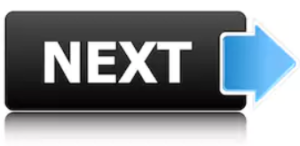 |


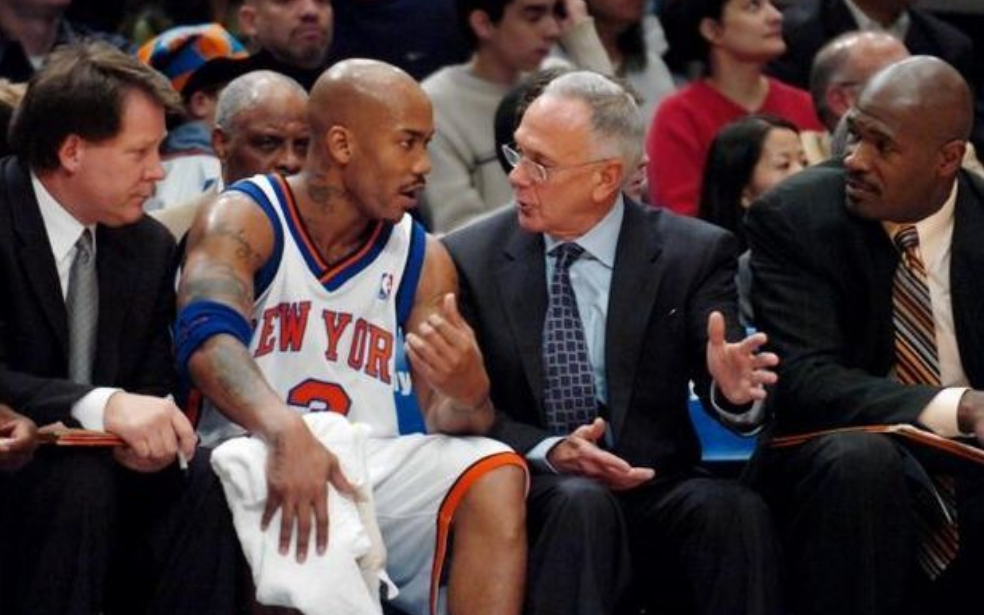
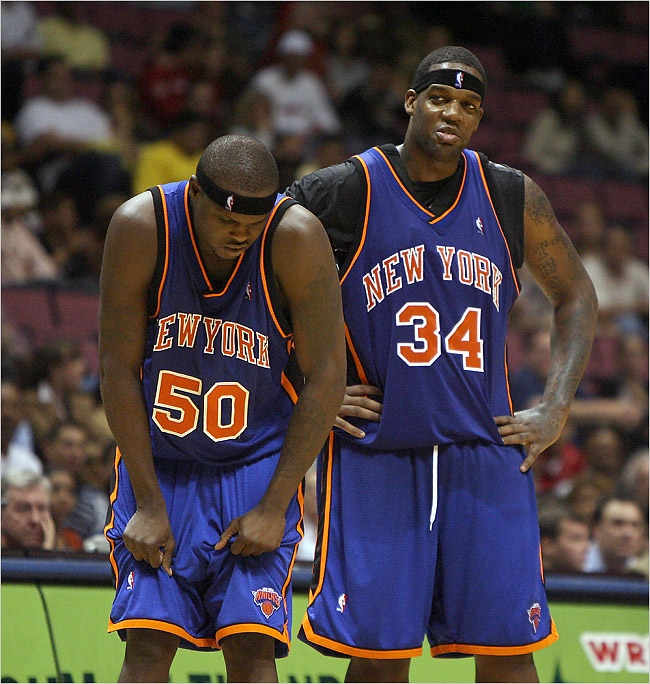
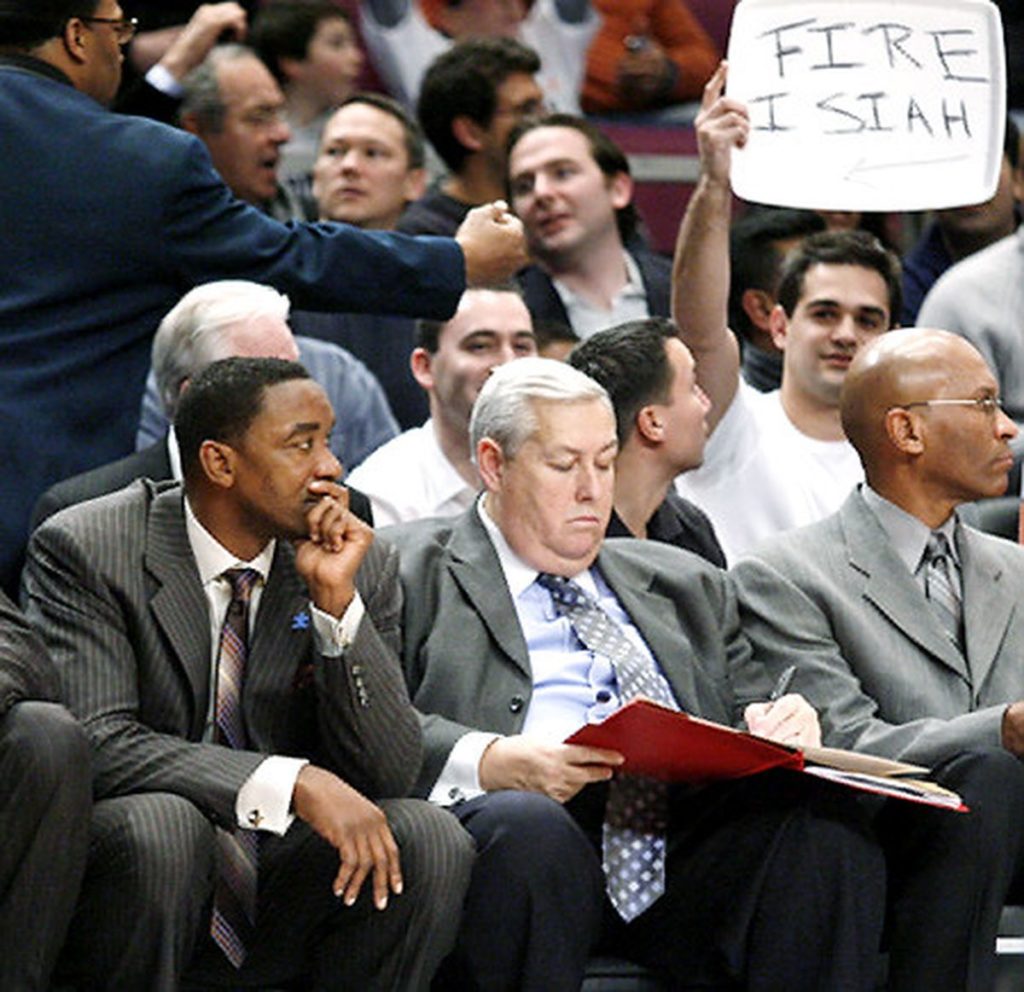

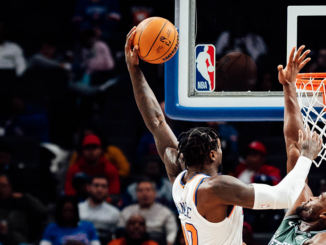
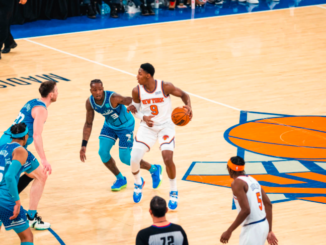
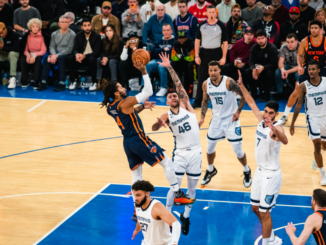
refreshingly fair take on Isiah… Largely agree with it